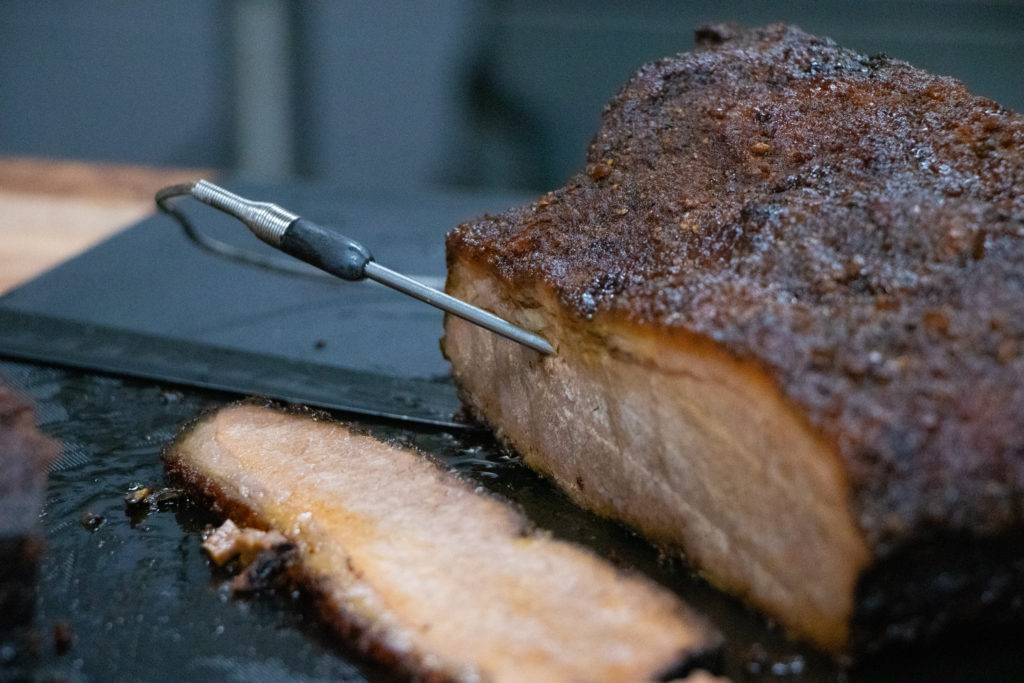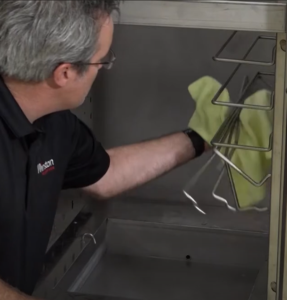Brisket. Is there a better product to cook to celebrate May’s National BBQ Month? Brisket is incredibly popular, with a 23% increase in menus over the last decade. Whether you’re preparing these babies in-house, or are opting for commercially produced products, CVap ovens are great for retherming brisket without sacrificing quality.


To test the full range of products, we rethermed two brisket types. The first was a fully cooked, house-smoked, whole unsliced brisket. The other was commercially produced Hormel sliced brisket. Notably, both briskets were whole, smoked, and fully cooked. But the commercial product was smaller, roughly seven pounds. Additionally, it came presliced. On the other hand, the homemade product is unsliced and was about 14 pounds. We set them up in the same CHV7-05UV oven, with the same program: Vapor 170°F/Air 200°F. We wrapped both briskets in foil and placed them into the preheated oven.
Retherming Brisket - The Same, But Different
Although these were both whole briskets, they fell under different Food Code 3-403.11(C) requirements. The code requires that rethermed proteins hit their required safe temperature in two hours or less
Because the Hormel brisket was a commercially produced product, the code requires it to reach the minimally safe temperature of 135°F. Our CVap oven easily hit the mark. The Hormel brisket reached safe temp in a little under two hours. Clearly, the lower retherming temperature requirement, coupled with CVap’s high humidity retherming program, and the added ingredients (like phosphate) helped keep this pre-sliced brisket perfectly moist.
However, the food code requirements for previously cooked homemade brisket are more stringent. Code dictates that it must reach a minimum safe temperature of 165°F for 15 seconds. Our initial test reveal that this much larger brisket missed the mark on cook time. Unsurprisingly, this brisket, being twice as large as the Hormel product, took nearly twice as long to hit 165°F in the thickest part of the roast, between the point and flat. But no test is a failure, even if the results are not what we wanted. We headed back to the drawing board.
The solution was simple. We separated the whole brisket into the point and flat and wrapped them separately. Consequently, the two smaller cuts reached the required temperature within the two-hour limit. Although we didn’t test it, you could probably optimize the program by either decreasing the vapor and air temperatures or minimizing the temperature differential between the two (for example, Vapor 180°F/Air 190°F, or Vapor 190°F/Air 200°F).
Why Retherm?
What’s the practicality of retherming briskets instead of serving scratch cooked? Time. Briskets are a classic example of a protein you must cook low and slow to achieve the best results. Unless you can perfectly predict how much your operation needs on a given day (and plan accordingly), it is impractical to cook on-demand. But cooking ahead of time and properly refrigerating reduces the time it takes to retherm and serve. Think of it as a form of staging. Ultimately, anything that helps you serve faster and turn tables is beneficial.






